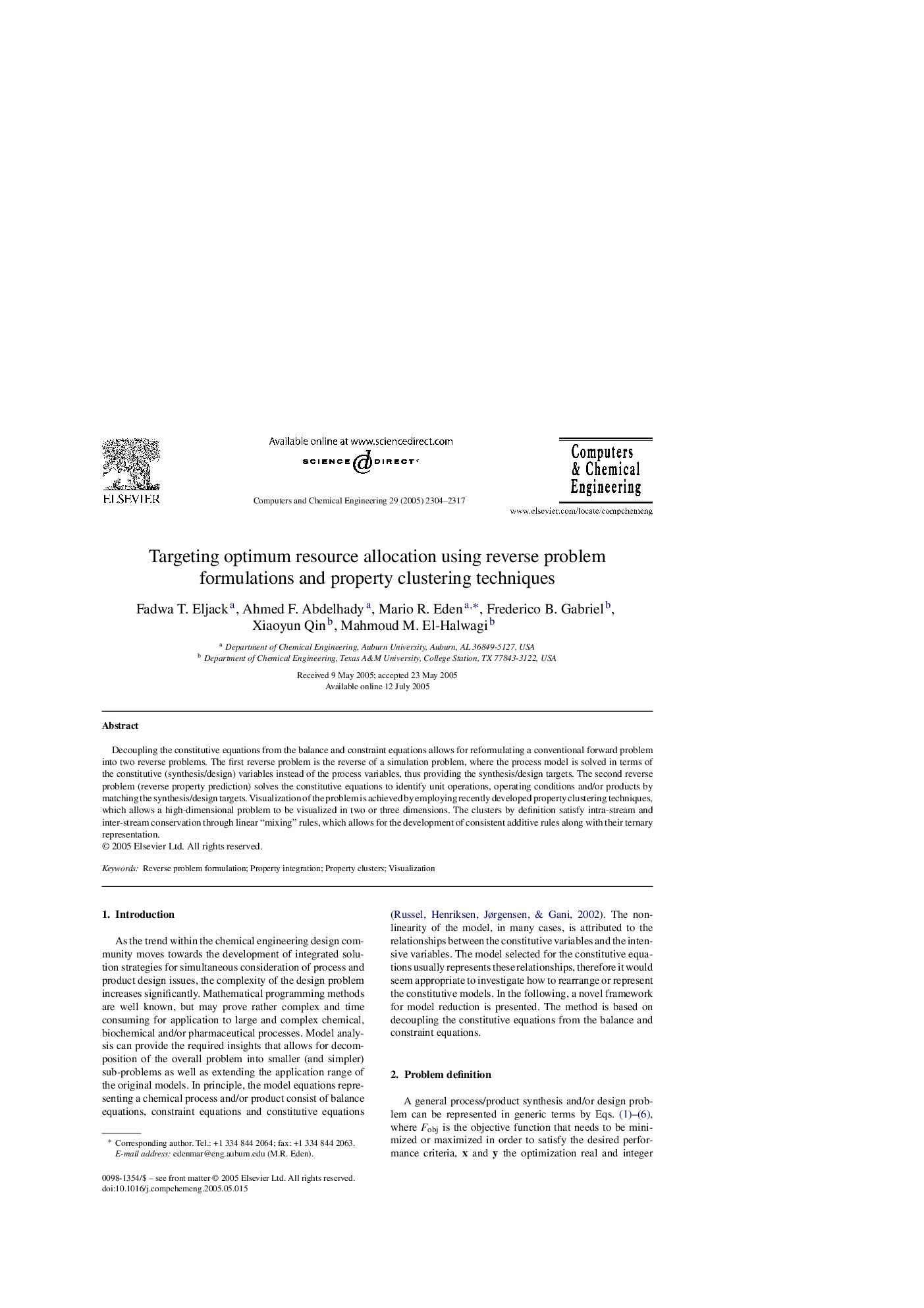| Article ID | Journal | Published Year | Pages | File Type |
|---|---|---|---|---|
| 174275 | Computers & Chemical Engineering | 2005 | 14 Pages |
Decoupling the constitutive equations from the balance and constraint equations allows for reformulating a conventional forward problem into two reverse problems. The first reverse problem is the reverse of a simulation problem, where the process model is solved in terms of the constitutive (synthesis/design) variables instead of the process variables, thus providing the synthesis/design targets. The second reverse problem (reverse property prediction) solves the constitutive equations to identify unit operations, operating conditions and/or products by matching the synthesis/design targets. Visualization of the problem is achieved by employing recently developed property clustering techniques, which allows a high-dimensional problem to be visualized in two or three dimensions. The clusters by definition satisfy intra-stream and inter-stream conservation through linear “mixing” rules, which allows for the development of consistent additive rules along with their ternary representation.
